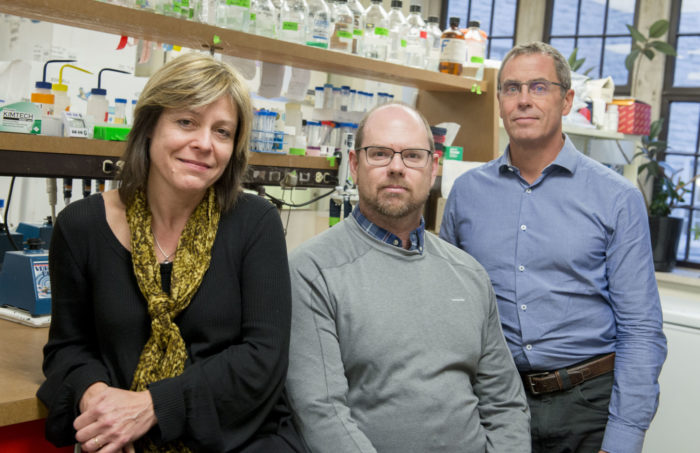
The scientific community is buzzing with the promise that CRISPR offers for human gene-editing, opening the door to use gene-therapy to treat diseases like cystic fibrosis and leukemia.
In cystic fibrosis, for example, there is one gene mutation which causes the disease in a very large proportion of patients. If it were possible to use CRISPR to cut that mutation out of the genome, the disease could potentially be cured.
«The problem with CRISPR is that it will cut DNA, but then DNA-repair will take that cut and stick it back together," said the study’s principal investigator, David Edgell, associate professor at Western’s Schulich School of Medicine & Dentistry. «That means it is regenerating the site that the CRISPR is trying to target, creating a futile cycle. The novelty of our addition, is that it stops that regeneration from happening.»
The Western researchers have demonstrated that the creation of a new enzyme called TevCas9, which cuts the DNA in two places instead of one, makes it much more difficult for the DNA-repair to regenerate the site of the cut. The researchers created TevCas9 by adding an enzyme called I-Tevl onto the nuclease, Cas9, which is the typical enzyme used to cut DNA in CRISPR.
The study also showed that the addition of Tev shows promise at being much more specific in targeting genes and less likely to cause off-target effects in the genome, which is a significant problem for any potential therapeutic application.
«Because there are two cut-sites, there is less chance that these two sites occur randomly in the genome; much less chance than with just one site," said co-author Caroline Schild-Poulter, associate professor at Schulich Medicine & Dentistry and a scientist at Robarts Research Institute. «This remains to be tested, but this is the hope and the expectation.»
The study resulted from a long-standing collaboration at Schulich Medicine & Dentistry between David Edgell, Caroline Schild-Poulter and Greg Gloor and was funded by the Natural Sciences and Engineering Research Council of Canada (NSERC).
Source: http://mediarelations.uwo.ca/2016/12/12/scientists-use-molecular-lego-take-crispr-gene-editing-tool-...



